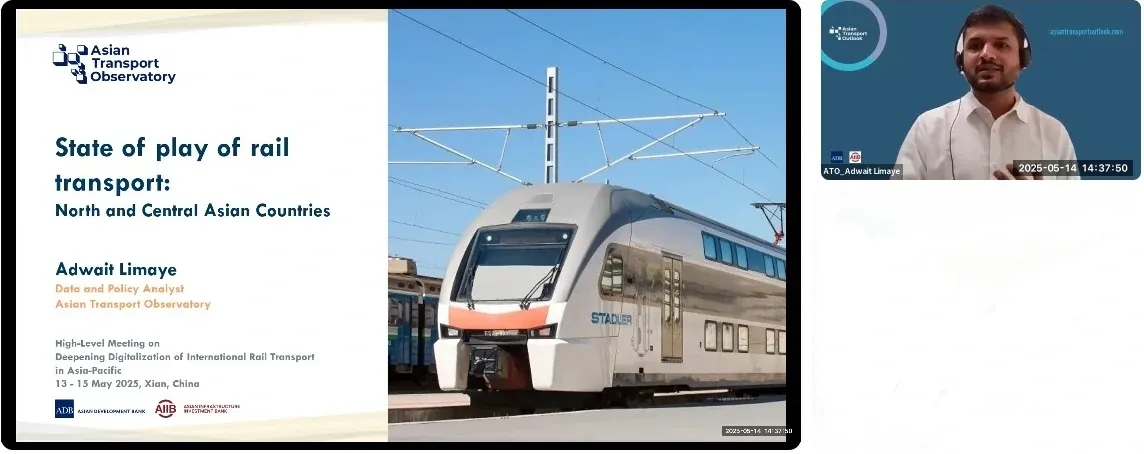ATO contributes to High-Level Dialogue on the Future of Rail in North and Central Asia

At the UNESCAP High-Level Meeting on Deepening Digitalization of International Rail Transport in Asia-Pacific, held from 13-15 May 2025 in Xi’an, China, Adwait Limaye, Data and Policy Analyst at the Asian Transport Outlook (ATO), delivered a presentation on the "State of Play of Rail Transport in North and Central Asian Countries."
His talk highlighted the region's paradox: while North and Central Asia (NCA) is among the most rail-rich subregions globally—with over 700 km of rail per million people—its geographic isolation, high freight dependence, and underutilized networks continue to pose major challenges.
Since 2000, the subregion has added over 61,000 km of heavy rail, yet growth in urban rail has been sluggish at just 1% per year—far below the pace in other Asia-Pacific subregions. Rail infrastructure has grown steadily, but road networks still outpace rail in both expansion and usage. Urban connectivity remains a weak link.
Key insights from the presentation included:
- Mixed Policy Priorities: Public transport has risen in policy importance, while rail improvement has declined in priority, falling below aviation. However, rail electrification has emerged as a top 15 policy goal, signaling progress toward sustainability.
- Digitalization and Modernization: The role of digital solutions in reversing declining rail utilization and improving freight efficiency was emphasized.
- Energy and Emissions: Energy intensity of rail has improved significantly, dropping from 200 MJ/USD in 2000 to 70 MJ/USD in 2023.
- Investment and Resilience: NCA is estimated to allocate the highest share of transport investment to rail across Asia-Pacific—33% in the coming decade.
He concluded by underscoring that with tailored national strategies, sustained investment, and focused action on digitalization and electrification, rail can become the backbone of sustainable transport in the region.
The presentation drew on updated projections from the ATO, reflecting recent economic and policy shifts, and informed by national targets, global commitments, and current infrastructure pipelines.